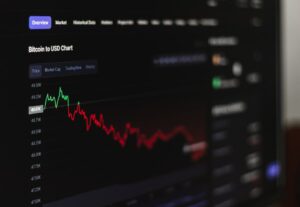Using Forex Currency Charts to Identify Trading Opportunities
Forex currency charts are an essential tool for traders looking to identify potential trading opportunities in the foreign exchange market. These charts provide a visual representation of price movements and patterns over a specific period, helping traders make informed decisions about when to enter or exit a trade. In this article, we will explore how forex currency charts can be used effectively to identify trading opportunities.
Types of Forex Currency Charts
There are several types of forex currency charts available, with the most common being line charts, bar charts, and candlestick charts. Each type has its own unique advantages and can be used to analyze price movements in different ways.
Line charts are the simplest form of forex currency charts. They display a line that connects the closing prices of a currency pair over a given period. Line charts are useful for identifying long-term trends and identifying support and resistance levels.
Bar charts provide more information than line charts by showing the high, low, open, and close prices for a specific period. Traders can use bar charts to analyze price volatility and identify potential reversals. However, bar charts can be overwhelming for beginners due to the amount of information they display.
Candlestick charts are the most popular and widely used type of forex currency charts. They provide the same information as bar charts but in a more visually appealing way. Candlestick charts display each period as a candle, with the body representing the opening and closing prices and the wicks (or shadows) representing the high and low prices. Candlestick patterns can provide valuable insights into market sentiment and potential trend reversals.
Identifying Trends with Forex Currency Charts
One of the primary uses of forex currency charts is to identify trends in the market. Trends can be classified as bullish (upward), bearish (downward), or sideways (horizontal). By identifying the direction of the trend, traders can make more informed decisions about whether to buy or sell a currency pair.
To identify trends, traders can use various technical indicators such as moving averages, trend lines, and support and resistance levels. Moving averages are commonly used to smooth out price fluctuations and identify the overall direction of the market. A bullish trend is characterized by prices trading above the moving average, while a bearish trend is indicated by prices trading below the moving average.
Trend lines can also help identify the direction of the trend. A bullish trend line is drawn by connecting a series of higher lows, while a bearish trend line is drawn by connecting a series of lower highs. When the price breaks above or below a trend line, it can signal a potential trend reversal or continuation.
Support and resistance levels are horizontal lines drawn on a forex currency chart to indicate levels where the price has historically struggled to break through. A support level is a price level where buying pressure is strong enough to prevent further price declines, while a resistance level is a price level where selling pressure is strong enough to prevent further price increases. Traders can use these levels to identify potential entry or exit points for their trades.
Identifying Chart Patterns
Another way to use forex currency charts to identify trading opportunities is by analyzing chart patterns. Chart patterns are formations that occur on price charts and can provide valuable insights into future price movements.
Some common chart patterns include:
1. Head and Shoulders: This pattern consists of a peak (head) with two smaller peaks (shoulders) on either side. It signals a potential trend reversal from bullish to bearish.
2. Double Top/Bottom: This pattern occurs when the price reaches a high (double top) or low (double bottom) twice but fails to break through. It indicates a potential trend reversal.
3. Triangle: This pattern is formed by drawing trend lines that converge towards each other. It signals a period of consolidation before a potential breakout.
4. Flag and Pennant: These patterns are characterized by a sharp price movement followed by a period of consolidation. They indicate a potential continuation of the previous trend.
Conclusion
Forex currency charts are a valuable tool for traders looking to identify potential trading opportunities. By analyzing price movements, trends, and chart patterns, traders can make informed decisions about when to enter or exit a trade. It is essential to use multiple types of charts and technical indicators to gain a comprehensive understanding of the market and increase the chances of successful trading.





